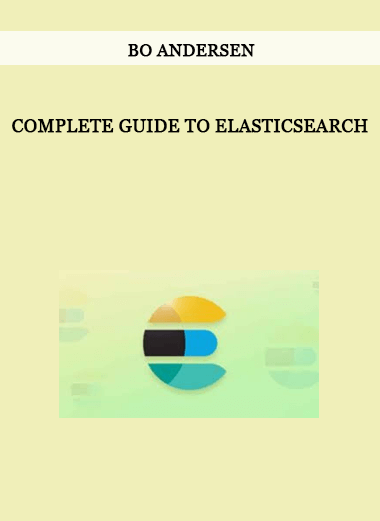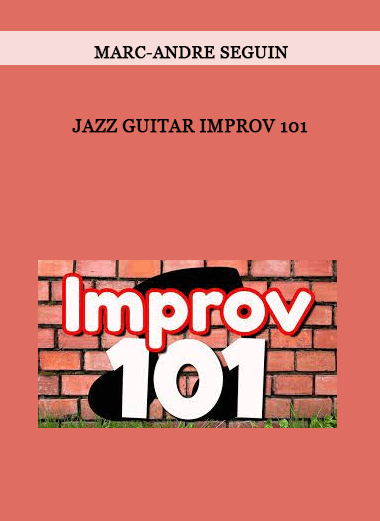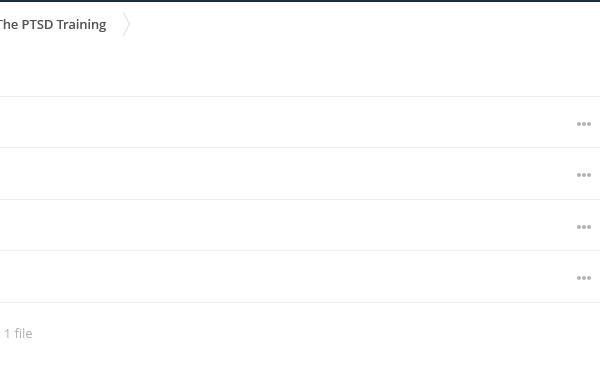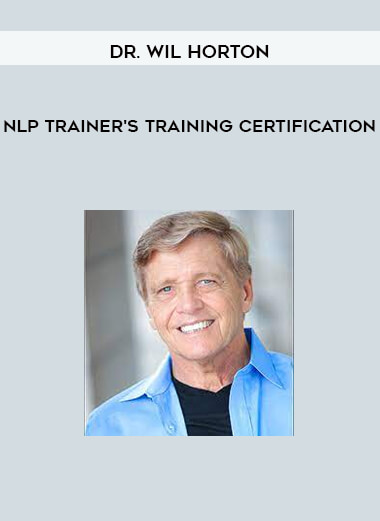Courses Infomation
Complete Guide to Elasticsearch by Bo Andersen

Complete Guide to Elasticsearch by Bo Andersen
**More information:
Sale Page
Archive Page
Description
Complete Guide to Elasticsearch
Find the needle in the haystack.
This course is available today, but this page has yet to be updated!
This means that it’s your lucky day, as you can still make use of the below coupon code!
Enroll today to get a 75% early bird discount.
Use the following coupon code at checkout to claim your discount.
What’s it all about?
Below is some of what you will learn within the course.
- Understand the architecture of Elasticsearch
- Understand how Elasticsearch works under the hood
- Different types of search queries (full text, compound, …)
- How to work with mappings
- Analyzers, tokenizers, stemming, etc.
- Fuzzy searches, pagination, filters, etc.
- Auto-completion using suggesters
- Using aggregations
30 day money back guarantee
Don’t like the course? Get your money back, no questions asked.
Your instructor
I am a web developer from Denmark who has more than 10 years of experience with software development and web development. I am a full-stack developer, meaning that I work with backend as well as frontend development. I have worked for a number of successful companies in the past, including as a backend developer on one of Denmark’s most popular websites. Now I work as a freelance consultant and teacher, and love teaching people what I have learned over the years.
Course Curriculum
Getting Started
-
Preview
Introduction to this course (5:41)
-
Preview
Introduction to Elasticsearch (5:33)
-
Preview
Overview of the Elastic Stack (ELK+) (6:05)
-
Start
Quiz
Architecture of Elasticsearch
-
Start
Introduction to this section (1:12)
-
Start
Nodes & Clusters (5:14)
-
Start
Quiz
-
Start
Indices & Documents (1:40)
-
Start
A word on types (1:21)
-
Start
Sharding (4:52)
-
Start
Quiz
-
Start
Replication (3:33)
-
Start
Quiz
-
Start
Keeping replicas synchronized (3:14)
-
Start
Searching for data (3:42)
-
Start
Distributing documents across shards (4:03)
-
Start
Wrap up (1:16)
Installing Elasticsearch & Kibana
-
Start
Running Elasticsearch and Kibana with Docker (5:10)
-
Preview
Installing Elasticsearch on Mac/Linux (5:20)
-
Preview
Installing Elasticsearch on Windows (5:36)
-
Start
Configuring Elasticsearch (3:43)
-
Preview
Installing Kibana on Mac/Linux (2:52)
-
Preview
Installing Kibana on Windows (2:42)
-
Start
Configuring Kibana (2:04)
-
Preview
Introduction to Kibana and dev tools (6:36)
-
Start
Using the MSI installer on Windows
Managing Documents
-
Start
Creating an index (1:34)
-
Start
Adding documents (3:49)
-
Start
Retrieving documents by ID (1:16)
-
Start
Replacing documents (1:29)
-
Start
Updating documents (3:42)
-
Start
Scripted updates (3:08)
-
Start
Upserts (2:32)
-
Start
Deleting documents (3:30)
-
Start
Deleting indices (0:49)
-
Start
Batch processing (5:56)
-
Start
Importing test data with cURL (2:51)
-
Start
Exploring the cluster (6:53)
Mapping
-
Start
Introduction to mapping (1:23)
-
Start
Dynamic mapping (4:27)
-
Start
Meta fields (2:50)
-
Start
Field data types (13:48)
-
Start
Adding mappings to existing indices (1:57)
-
Start
Changing existing mappings (3:51)
-
Start
Mapping parameters (8:02)
-
Start
Adding multi-fields mappings (2:40)
-
Start
Defining custom date formats (5:46)
-
Start
Picking up new fields without dynamic mapping (7:33)
-
Start
Wrap up (0:37)
Analysis & Analyzers
-
Start
Introduction to the analysis process (1:53)
-
Start
A closer look at analyzers (5:21)
-
Start
Using the Analyze API (3:30)
-
Start
Understanding the inverted index (4:31)
-
Start
Quiz
-
Start
Overview of character filters (2:36)
-
Start
Overview of tokenizers (8:36)
-
Start
Overview of token filters (6:26)
-
Start
Overview of built-in analyzers (5:00)
-
Start
Configuring built-in analyzers and token filters (4:43)
-
Start
Creating custom analyzers (3:13)
-
Start
Using analyzers in mappings (3:20)
-
Start
Adding analyzers to existing indices (3:30)
-
Start
A word on stop words (1:01)
-
Start
Wrap up (1:01)
Introduction to Searching
-
Start
Search methods (2:17)
-
Start
Searching with the request URI (3:50)
-
Start
Introducing the Query DSL (2:50)
-
Start
Understanding query results (1:57)
-
Start
Understanding relevance scores (10:30)
-
Start
Debugging unexpected search results (1:43)
-
Start
Query contexts (2:40)
-
Start
Full text queries vs term level queries (5:57)
-
Start
Quiz
Term Level Queries
-
Start
Introduction to term level queries (1:10)
-
Start
Searching for a term (2:28)
-
Start
Searching for multiple terms (1:48)
-
Start
Retrieving documents based on IDs (1:07)
-
Start
Matching documents with range values (3:46)
-
Start
Working with relative dates (date math) (7:37)
-
Start
Matching documents with non-null values (2:00)
-
Start
Matching based on prefixes (1:19)
-
Start
Searching with wildcards (2:34)
-
Start
Searching with regular expressions (3:03)
-
Start
Exercises (1:07)
-
Start
Exercises: Solutions (6:16)
Full Text Queries
-
Start
Introduction to full text queries (2:23)
-
Start
Flexible matching with match query (4:45)
-
Start
Matching phrases (1:38)
-
Start
Searching multiple fields (2:38)
-
Start
Exercises (0:40)
-
Start
Exercises: Solutions (2:29)
Adding Boolean Logic to Queries
-
Start
Introduction to compound queries (1:09)
-
Start
Querying with boolean logic (10:37)
-
Start
Debugging bool queries with named queries (3:16)
-
Start
How the “match” query works (6:27)
Controlling Query Results
-
Start
Specifying the result format (3:01)
-
Start
Source filtering (4:26)
-
Start
Specifying the result size (1:36)
-
Start
Specifying an offset (2:09)
-
Start
Pagination (5:04)
-
Start
Sorting results (5:16)
-
Start
Sorting by multi-value fields (2:27)
-
Start
Filters (3:52)
Aggregations
-
Start
Introduction to aggregations (2:43)
-
Start
Metric aggregations (9:40)
-
Start
Introduction to bucket aggregations (6:25)
-
Start
Document counts are approximate (6:22)
-
Start
Nested aggregations (5:58)
-
Start
Filtering out documents (2:31)
-
Start
Defining bucket rules with filters (3:16)
-
Start
Range aggregations (7:54)
-
Start
Histograms (8:01)
-
Start
Global aggregation (2:59)
-
Start
Missing field values (2:27)
-
Start
Aggregating nested objects (2:16)
Improving Search Results
-
Start
Introduction to this section (0:27)
-
Start
Proximity searches (7:17)
-
Start
Affecting relevance scoring with proximity (5:34)
-
Start
Fuzzy match query (handling typos) (9:06)
-
Start
Fuzzy query (2:33)
-
Start
Adding synonyms
-
Start
Adding synonyms from file (5:40)
-
Start
Highlighting matches in fields (6:05)
-
Start
Stemming (5:26)
Salepage : Complete Guide to Elasticsearch by Bo Andersen
About Author
Bo Andersen
My name is Bo Andersen and I am a software engineer from Denmark.
I currently work as the lead developer and partner at a startup company, apart from teaching here at Udemy. I have previously worked at a very successful company, operating one of the largest websites in Denmark, before deciding to teach software engineering. I have worked with programming for a decade and have a bachelor’s degree in computer science. I started out learning to code by building websites in PHP, but have since worked with many other technologies such as Elasticsearch, Logstash, Kibana, Beats, Java, Python, Docker, AWS, etc.
I have also been blogging about programming subjects for a number of years, so I encourage you to have a look at my website if you are curious.

































Reviews
There are no reviews yet.